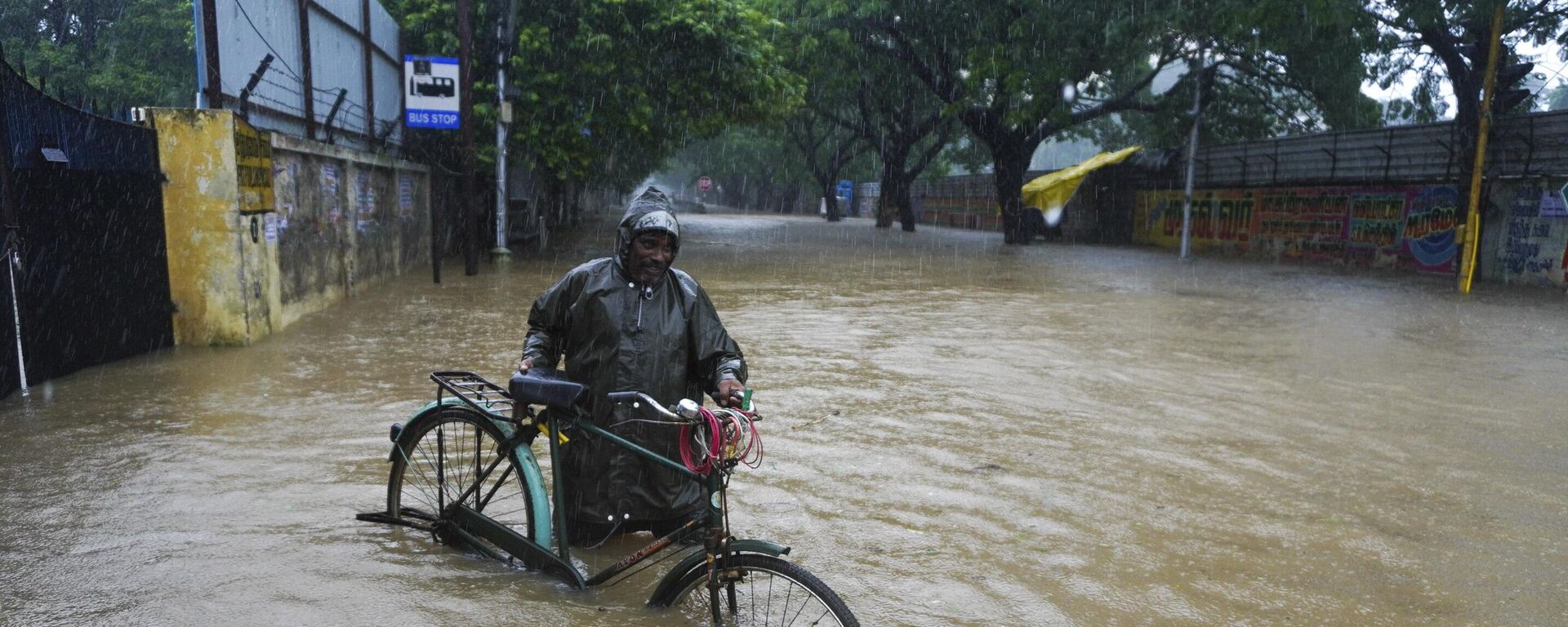https://sputnikglobe.com/20221130/volume-of-water-in-ganges-river-declining-un-climate-agency-says-1104848454.html
Volume of Water in Ganges River Declining, UN Climate Agency Says
Volume of Water in Ganges River Declining, UN Climate Agency Says
Sputnik International
The Indo-Gangetic Plain supports the livelihood of half a million people, whose territory straddles eastern Pakistan, northern India, southern Nepal, and the... 30.11.2022, Sputnik International
2022-11-30T07:06+0000
2022-11-30T07:06+0000
2022-11-30T07:06+0000
india
ganges
river
ganga river
climate change
climate
climate
climate change deal
water
water
https://cdn1.img.sputnikglobe.com/img/07e6/0b/1e/1104850134_0:160:3073:1888_1920x0_80_0_0_e6e7a9c92f15bf7f631bdd879f6878b2.jpg
The volume of water in the Himalayan river Ganges and the river basin have both consistently declined from 2002 to 2021, the World Meteorological Organization (WMO), an authoritative voice on weather, climate and water at the United Nations, said.In its latest report titled “State of Global Water Resources 2021," the WMO says that the Ganga-Brahmaputra and Indus basins that form the Plain witnessed more water flowing in the river channels due to glacial melt, even as their total water storage declined in 2021.TWS, which includes surface soil moisture, root zone soil moisture, groundwater, snow, ice, water stored in the vegetation, and river and lake water.The report says the aim of this annual stocktake is to support monitoring and management of global freshwater resources in an era of growing demand and limited supplies.According to the report, several global hotspots, including the San Francisco River basin in Patagonia, the Indus headwaters, and basins in the south-western United States, have similar negative TWS.A positive TWS trend has been observed in the Great Lakes region, the Niger basin, East African Rift and North Amazon basin.
https://sputnikglobe.com/20221129/flood-alert-issued-in-indias-tamil-nadu-after-heavy-rain-release-of-dam-water-1104806794.html
ganges
ganga river
Sputnik International
feedback@sputniknews.com
+74956456601
MIA „Rossiya Segodnya“
2022
Deexa Khanduri
https://cdn1.img.sputnikglobe.com/img/07e4/0c/1e/1081607388_0:0:961:960_100x100_80_0_0_e9e931b8c1e18fb41f3074e2145d7a3a.jpg
Deexa Khanduri
https://cdn1.img.sputnikglobe.com/img/07e4/0c/1e/1081607388_0:0:961:960_100x100_80_0_0_e9e931b8c1e18fb41f3074e2145d7a3a.jpg
News
en_EN
Sputnik International
feedback@sputniknews.com
+74956456601
MIA „Rossiya Segodnya“
Sputnik International
feedback@sputniknews.com
+74956456601
MIA „Rossiya Segodnya“
Deexa Khanduri
https://cdn1.img.sputnikglobe.com/img/07e4/0c/1e/1081607388_0:0:961:960_100x100_80_0_0_e9e931b8c1e18fb41f3074e2145d7a3a.jpg
volume of water in river ganga, ganga water level, ganga, india, nepal, indo-gangetic plain, eastern pakistan, northern india, southern nepal, bangladesh, un climate agency, state of global water resources 2021, melting glaciers, terrestrial water storage (tws)
volume of water in river ganga, ganga water level, ganga, india, nepal, indo-gangetic plain, eastern pakistan, northern india, southern nepal, bangladesh, un climate agency, state of global water resources 2021, melting glaciers, terrestrial water storage (tws)
Volume of Water in Ganges River Declining, UN Climate Agency Says
Deexa Khanduri
Sputnik correspondent
The Indo-Gangetic Plain supports the livelihood of half a million people, whose territory straddles eastern Pakistan, northern India, southern Nepal, and the whole of Bangladesh.
The volume of water in the Himalayan river Ganges and the river basin have both consistently declined from 2002 to 2021, the World Meteorological Organization (WMO), an authoritative voice on weather, climate and water at the United Nations, said.
In its latest report titled “State of Global Water Resources 2021," the WMO says that the Ganga-Brahmaputra and Indus basins that form the Plain witnessed more water flowing in the river channels due to glacial melt, even as their total water storage declined in 2021.
“Major Indian river basins (the Brahmaputra, Ganges, and Indus), as well as other important river basins in Asia (the Huang He and Mekong), exhibit a gradual decline in terrestrial water storage (TWS) over the period 2002–2021,” the report stated.
TWS, which includes surface soil moisture, root zone soil moisture, groundwater, snow, ice, water stored in the vegetation, and river and lake water.
The report says the aim of this annual stocktake is to support monitoring and management of global freshwater resources in an era of growing demand and limited supplies.

29 November 2022, 07:07 GMT
According to the report, several global hotspots, including the San Francisco River basin in Patagonia, the Indus headwaters, and basins in the south-western United States, have similar negative TWS.
As for the reasons, the report said melting glaciers were primarily to blame: "the melting of snow and ice also has a significant impact in several areas, including Alaska, Patagonia, and the Himalayas," the report says.
A positive TWS trend has been observed in the Great Lakes region, the Niger basin, East African Rift and North Amazon basin.



